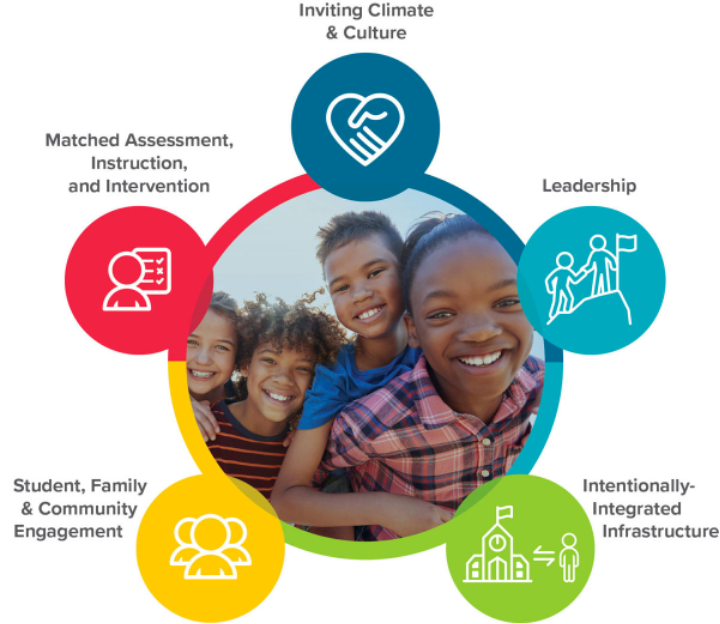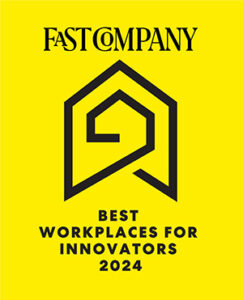January 16, 2020
As an educator, you’ve probably heard the acronym MTSS at some point. But you may not be clear on what it stands for or why it is used.
So, what is MTSS? And why are districts implementing it?
MTSS is an important piece of the educational support system, and everyone involved should understand it. This blog explains MTSS in a way that will help all stakeholders to understand this important framework, from staff members to parents to students.
MTSS definition
MTSS stands for multi-tiered system of support. As the name implies, this framework has a tiered infrastructure that uses data to help match academic and social-emotional behavior assessment and instructional resources to each student’s needs.
In this tiered, data-informed framework, educators work to ensure that the majority of students respond to core instruction. Students who need additional support for enrichment or remediation are identified by data and provided that support with the right focus and intensity.
What is the purpose of MTSS in education?
MTSS helps educators to be thoughtful about using resources appropriately and impactfully. It also allows the use of data to continually monitor and improve the effectiveness of their actions. MTSS makes the district-wide system more effective and ensures we’re supporting the needs of every student.
MTSS streamlines and brings cohesion to the good work and best practices that are already happening in a district so that those efforts are no longer happening in isolation. MTSS also helps districts to fill gaps in their standard practices that might exist due to common challenges, like limited resources, difficulty collaborating, and a lack of visibility into program effectiveness.
To better understand MTSS and its different components, let’s look at an analogy.
An MTSS analogy: Visiting the dentist’s office
Each day, we are all providing universal, general care for our teeth in the form of brushing and flossing. Most communities also have a dental office, where general practitioner dentists are staffed to provide regular cleanings. These high-quality, universal best practices—flossing, brushing, and regular cleanings—are intended to be effective for the vast majority of patients.
They are also intended to prevent a high number of patients from needing advanced dental care, such as oral surgery. Oral surgery is an intense treatment, demanding more resources, more training, and specialized staff.
Data, such as pain or medical examinations, may reveal that some patients truly need that intensive care, in which case it’s important to provide support that is well-aligned with the patient’s needs in a timely manner. But if there are many people who need intense treatment, our available resources may be exhausted by the demand.
By providing, monitoring, and continually improving our universal support and preventative actions, we’re better able to care for all patients and limit the need for intensive treatment.
In schools, MTSS functions in a similar way. Educators work to have highly effective instruction in the classroom so that fewer students need intensive interventions to be successful. And if we have a smaller number of students who need additional support and services, we have the resources needed to provide it—and the data needed to align our actions to the need.
Why are districts implementing MTSS?
MTSS in education allows teachers to focus on supporting all of their students using a systematic approach. Districts are implementing MTSS because it enables teams to:
- Improve the outcomes for all students in terms of academics and social-emotional behavior
- Address the unmet needs of many students and groups of students
- De-silo data and make systems and processes more effective and connected
- Take a whole-child approach to supporting students
- Help students grow no matter where they start
MTSS and the Every Student Succeeds Act (ESSA)
MTSS is also rooted in policy. When the Every Student Succeeds Act (ESSA) was introduced through legislation in 2015, the focus shifted from addressing “special education” to addressing the needs of “every child.”
This shift allowed MTSS to blossom in districts as school funding began to be directed toward multiple assessments and progress monitoring.
What does an MTSS framework look like?
There is no one correct approach to MTSS. As a result, there can be differences in the frameworks adopted by various states and districts.
For example, one state might refer to a “Multi-Tiered System of Support” while another refers to a “Tiered System of Support for Students.” Districts and states can adopt different essential components within their frameworks or see variance in the specific verbiage used to define or describe those components. Yet, there are often more similarities than differences among MTSS frameworks.
Supporting MTSS in schools
Discover Renaissance solutions that support more effective MTSS.
What is an example of an MTSS framework?
Here is a general MTSS framework that depicts the fundamental processes, tools, and practices that are generally included in MTSS from a national perspective. It also shows the importance of fitting these previously disparate elements into a cohesive framework:

Let’s explore each of these components in detail.
Matched assessment, instruction, and intervention
Assessment, instruction, and intervention are interconnected, effective, aligned to student needs, and informed by data. This component typically includes:
- Whole-child measures (academic and social-emotional behavior): Analyzing data from multiple sources to better understand student needs (as opposed to a singular focus on the academic lens).
- Comprehensive assessment system: A complete set of high-quality assessment tools that enables careful selection of the right assessment at the right time to provide the right information to inform next steps.
- Tiered instruction and support for all students (tier 1, 2, and 3): A system-level approach to aligning support at the right intensity according to the student’s need.
Inviting climate and culture
Districts, schools, and classrooms are safe, welcoming, and non-discriminatory environments in which students can focus on learning and feel accepted and supported. This component typically includes:
- Culturally and linguistically sustaining practices: Ensuring systemic actions support and encourage all students.
- Emotional, physical, and mental wellness: Dedicated curriculum is implemented to support student well-being as an important component of student success.
- Bullying prevention: Putting a stop to physical and virtual bullying.
Leadership
Effective leadership involves the deliberate allocation of time and resources for district and site leaders to build capacity and foster continual improvement. This component typically includes:
- Systematic analysis for patterns and trends with responsive, system-level strategic action: Leadership provides the vision, tools, and time necessary to proactively analyze and improve.
- Dedicated review of resource allocation: Visibility into (and data-driven decisions around) programming, staff, and other resources.
- Capacity building, communication, and expectations: Support provided around culturally, linguistically, and community-minded instructional leadership.
Intentionally integrated infrastructure
Districts and schools are intentionally developing, prioritizing, investing in, and providing system-level support to a connected and collaborative ecosystem of people, processes, and tools. This component typically includes:
- Collaborative professional learning: Support of one another in continually growing and better supporting students.
- Aligned policies, communication, and data processes: De-siloing efforts to support students and provide stakeholders with access to data and tools required to be successful.
- Intervention and program effectiveness and evaluation: Continually evaluating the impact of actions to continually increase effectiveness.
Student, family, and community engagement
Effective engagement requires a shared involvement, communication, and investment in students’ success across their wider environments. This component typically includes:
- Collaborative process and shared responsibility: Working directly with parents to help them understand their child’s needs so they can be supported at home, and working with the community to provide support and educational opportunities that the district does not have the resources to accommodate.
- Transparency of progress and goal setting: Engaging parents and communities as consumers of data.
- Student identity, voice, and choice: Actively involving students as the primary stakeholders in their own learning.
The power of a cohesive MTSS framework
Many of the components of MTSS are not new practices. They’re the high-impact actions that school practitioners have been doing for years.
In the past, however, there was a lack of explicit emphasis on aligning those efforts. Many educators would provide support to a student without any idea that concurrent interventions were happening. District-wide data analysis would occur without connecting findings to resource allocation or program needs.
MTSS isn’t reinventing the wheel—it’s simply bringing cohesion to student-centered practices while de-siloing the data-driven decisions that already happen in many districts. When implemented effectively, MTSS not only helps us to increase the effectiveness of our existing efforts, but also uncovers areas in which we may need to adjust or increase our efforts.
How do Renaissance products support MTSS in schools?
Although a variety of Renaissance products are beneficial to student achievement, the three that are most closely aligned with MTSS implementation are eduCLIMBER, FastBridge, and Star Assessments. Let’s break these programs down to show how your school or district may benefit from using them.
eduCLIMBER and MTSS
eduCLIMBER can help strengthen your MTSS framework with:
- Interactive whole-child data
- User-friendly collaboration tools
- Intervention effectiveness reporting
- And more
It will help your school or district move beyond mere data collection and seamlessly pull whole-child data directly into your daily work and decision making.
eduCLIMBER helps:
- Identify students in real time
- Build your best intervention program
- Improve positive behavioral interventions and support and monitor disproportionality with interactive behavior analytics
- Collaborate around data and move action steps forward
- Visualize student growth and progress toward your strategic goals with data dashboards
- See the students behind the data to advance equity in schools
How does eduCLIMBER work?
There are four main components to the eduCLIMBER system:
- Integrate: Access all current and previous whole-child data in real time from one centralized platform. Each user sees the students and data that have been assigned to them.
- Analyze: Explore interactive data visualizations across time to answer key questions around student needs and growth, intervention effectiveness, equity, and more.
- Act: Use built-in collaboration workflow tools to problem solve as a team. Drive decisions for the district, schools, grades, and students. Then put next steps into action—all without ever leaving the platform.
- Evaluate: Use one system to answer the question, “Is what we’re doing working?” across all roles, teams, and departments. Celebrate successes and make timely adjustments where needed.
FastBridge, Star Assessments, and MTSS
Both FastBridge and Star Assessments allow schools to identify which students are at risk, know the right intervention for each student, and measure whether interventions are helping students to catch up—all in one assessment platform.
While there are some differences between the two solutions, both offer curriculum-based measures (CBM) and computer-adaptive tests (CAT) to support screening and progress monitoring across reading and math. Social-emotional behavior screening is also available through the SAEBRS teacher and student self-reporting assessment.
FastBridge and Star Assessments are useful in regard to:
- Universal screening for academics and social-emotional behavior
- Progress monitoring to help close learning gaps faster
- Knowing exactly how to teach and intervene
- Helping all students become successful readers
- Strengthening Tier 1 with data-driven program evaluation
- Driving equitable academic and social-emotional behavior outcomes
How do FastBridge and Star Assessments work?
There are four main components to the FastBridge and Star Assessments systems:
- Screen: Screen all students in math, reading, and social-emotional behavior with brief, reliable, and accurate screening tools. Identify which students are at risk and the specifics causing them to struggle.
- Plan Tier 1 supports: Drive resource allocation to meet academic and social-emotional behavior needs in the universal tier. Address class-wide skill gaps with whole-group instructional recommendations and easy-to-follow lesson plans.
- Plan Tier 2 and Tier 3 support: Accelerate growth with specific and targeted intervention recommendations for small groups and individual students to effectively address skill gaps.
- Progress monitor: Determine whether interventions are working—and if they’re working quickly enough—with valid and reliable progress monitoring.
Supporting more effective MTSS
Interested in bringing eduCLIMBER, FastBridge, Star Assessments, or other Renaissance solutions to your district? Connect with an expert today to learn more.

